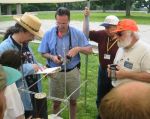My name is Peter Grace, KB1CVH.
I am writing to you about the Volunteer Resources Committee report on the ARRL’s Field Services Organization dated July 18-19, 2003.
When I first became licensed, and before I even owned an amateur radio, I was called on the phone by an amateur radio operator who welcomed me with a radiogram that welcomed me to the amateur radio world. When I obtained my first radio, my first or second conversation was with Jim Hatherley, WA1TBY,SK. I was very impressed by his kindness to this new ham. I then listened to and checked into the Eastern Massachusetts 2 meter traffic net on 145.23. I was welcomed to the net by Jim and the other amateurs who participated. Jim sent me a package on NTS in the mail. I didn’t check in again for some time as I wasn’t quite ready to handle traffic. Eventually the day came when I checked in and took traffic.
Now I am an Official Relay Station, a Net Control Station, a member of Eastern Massachusetts ARES, and RACES officer for the City of Somerville, Massachusetts, the 5th most densely populated city in the United States.
My introduction to amateur radio, besides reading the ARRL Amateur Radio Handbook, was listening to the local 2 meter traffic net. I’m certain that traffic nets are a way that the ARRL and Amateur Radio reaches out to many new hams. If there’s an NTS net on a local 2 meter repeater that meets every night like the Eastern Massachusetts 2 meter traffic net, many new hams will hear it.
While participating on traffic nets, I have learned how to participate in a formal net, how to pass traffic, how to receive traffic, how to be a net control station, and how to be part of the ‘System’. These skills are invaluable to amateur radio and to its members. These skills can be used in formal voice nets, in taking and passing traffic for served agencies in both ARES and RACES.
I think the report of the ARRL’s Field Services Organization may have done a disservice to the National Traffic system in comparing the NTS to other services. Some comments indicated that NTS isn’t changing with the times, and that it’s not using new technologies, and that there are delays in passing traffic. These do not reflect an understanding of NTS.
I would like to try to address these comments:
NTS is changing with the times. NTS is suffering by a lack of younger members due in part to the availability of other services to pass formal messages over long distances. Amateur Radio is suffering for the same reason. NTS still provides a valuable training ground for ARES and RACES operators who will need the skills when they are activated. ARES operators may be called upon to pass formal written messages from shelters or other locations for the public or served agencies. How will they know how to do this if they don’t get the experience in NTS ? When participating in ARES SETS and also while participating in local RACES nets, I have tried to work with amateur radio operators who didn’t know how to pass or receive an NTS format message correctly. It was very difficult to work with them as they didn’t have the skill gained from the experience of participating in NTS. NTS is a ‘System’. Systems have structure and procedures.
I know from personal experience that one does not get skilled at participating in a system by reading a book or piece of paper. NTS experience is a great way to learn how to pass formal traffic. Participating in local 2 meter NTS traffic nets that meet nightly are very accessible ways to get skilled at participating in formal nets and passing formal written traffic. Participation in NTS CW nets are wonderful for getting very skilled at CW and CW nets. NTS nets are the gold standard. If anything, ARES and RACES operators who don’t participate in NTS net are missing out on great opportunities to get skilled. Either it’s because there’s no local net accessible to them or they don’t make the time to participate. In ARES, we need to be functional when we are needed. Training is important. NTS traffic nets are training for ARES and any other service where formal nets are required. Monthly or Annual exercises do not train operators but can only give us an idea of how well those services can work. Experience, gained from frequently NTS net participation help operator performance.
NTS uses new technologies. There was one a time when traffic was passed only via CW. Now traffic is passed via voice on SSB and FM. Traffic is passed via packet radio. When a technology is sufficiently available to amateur radio operators and is able to be utilized to pass traffic, NTS uses that method if it helps to get the message through. Frequently though, the method that works is the lowest common denominator. An operator may not be part of NTS with PSK31 ability in the 617 areacode area and thus may not be able to respond to a call CQ NTS MA 617 K on PSK31. Many operators do have FM repeater ability which allows the message to get through. As technologies mature, amateurs make use of them in many ways including NTS.
There are delays in passing traffic. Most traffic is passed with Routine priority. There are additional priorities available for handling priority or emergency traffic. I know that NTS trained operators who do what ever it takes to get such a message through as soon as possible, but that routine traffic is generally not time sensitive or urgent. Perhaps due to a lack of NTS operators in a community, some traffic for that community isn’t delivered without delay. This points out a need to recruit more NTS operators, not a need to remove support for NTS.
The Volunteer Resources Committee report on the ARRL’s Field Services Organization dated July 18-19, 2003 did a disservice to the National Traffic System by not recognizing that NTS is a very important part of the ARRL’s mission and that it may benefit the ARRL and NTS to provide additional resources for recruitment of additional operators, additional local NTS nets, and retainment of NTS operators.
Sincerely yours,
Peter Grace KB1CVH/ORS
ARRL Member
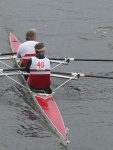
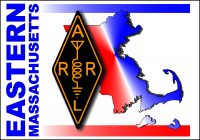


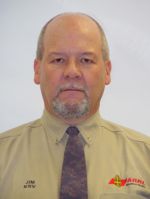 Jim Duarte, N1IV, has been nominated for the ARRL’s prestigious Philip J. McGan Memorial Silver Antenna Award. The McGan award is given annually to the individual who demonstrates volunteer public relations success on behalf of Amateur Radio at the local, state or national level, and will live up to the high standard of achievement exemplified by the late Philip J. McGan.
Jim Duarte, N1IV, has been nominated for the ARRL’s prestigious Philip J. McGan Memorial Silver Antenna Award. The McGan award is given annually to the individual who demonstrates volunteer public relations success on behalf of Amateur Radio at the local, state or national level, and will live up to the high standard of achievement exemplified by the late Philip J. McGan. Bob Salow, WA1IDA writes:
Bob Salow, WA1IDA writes: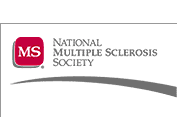 Rick Cantin, AA1TI wrote:
Rick Cantin, AA1TI wrote: Pi, K1RV wrote:
Pi, K1RV wrote: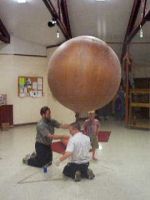 Ted T. Wright tedwright@csi.com wrote:
Ted T. Wright tedwright@csi.com wrote: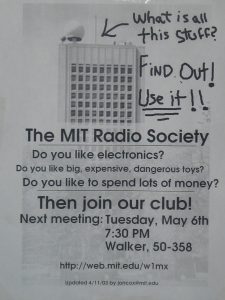
 Project Bread is again sponsoring the Ride for Hunger on Sunday, September 14. This ride raises funds to support feeding programs all across the Commonwealth. With the high level of unemployment, our efforts are needed more than ever. The Crocker Public Service Group was a vital part of raising over $250,000 last year. Our team provides crucial safety links to the 1,000 cyclists in this tour.
Project Bread is again sponsoring the Ride for Hunger on Sunday, September 14. This ride raises funds to support feeding programs all across the Commonwealth. With the high level of unemployment, our efforts are needed more than ever. The Crocker Public Service Group was a vital part of raising over $250,000 last year. Our team provides crucial safety links to the 1,000 cyclists in this tour. 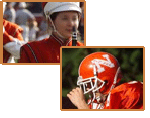 Alexander Rullo, KB1JLU wrote:
Alexander Rullo, KB1JLU wrote: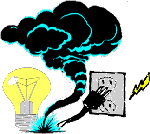 ARRL’s national web site carried summaries of Amateur Radio operations from the affected areas in the Midwest, New York and New England in the wake of yesterday’s major blackout. The following excerpt pertains to our section. It was based on a timely submission by EMa Public Information Coordinator Jim Duarte, N1IV:
ARRL’s national web site carried summaries of Amateur Radio operations from the affected areas in the Midwest, New York and New England in the wake of yesterday’s major blackout. The following excerpt pertains to our section. It was based on a timely submission by EMa Public Information Coordinator Jim Duarte, N1IV: The
The 
